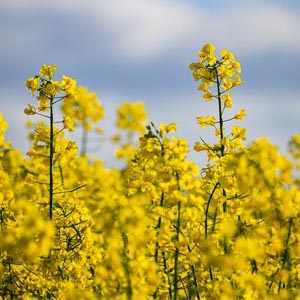Evaluation of the oil quality properties of Rapeseed genotypes contributed to drought stress at the flowering stage in semi-arid conditions

Accepted: March 30, 2022
All claims expressed in this article are solely those of the authors and do not necessarily represent those of their affiliated organizations, or those of the publisher, the editors and the reviewers. Any product that may be evaluated in this article or claim that may be made by its manufacturer is not guaranteed or endorsed by the publisher.
Authors
Climate change and water scarcity are among the significant limited factors to constrain the production and development of oilseed crops, especially rapeseed (Brassica napus L.), in arid and semi-arid areas. The effects of drought stress and late-sowing on the grain yield and oil quality of rapeseed were studied by conducting a factorial split-plot experiment as a randomized complete block design with three replications for two years (2015-2017) in Karaj, Iran. Irrigation and sowing date treatments were considered in the main plots as factorial, and cultivars were placed in subplots. Two sowing dates were considered; the regular date (October 7th) and the late-sowing date (November 6th). Irrigation was also carried out at two levels of normal irrigation and irrigation interruption from the flowering stage onwards. Experimental cultivars included ES Hydromel, ES Alonso, ES Darko, ES Lauren, and Ahmadi. The highest grain yield (4505.6 kg ha-1) was obtained on the regular date, and the normal irrigation. ES Hydromel had the best quality of oil and grain meal due to the highest percentage of palmitic acid (4.44%) under late cultivation and drought stress and the lowest glucosinolates content (23.19 μmol g-1 DW) under late cultivation. Therefore, the ES Hydromel hybrid cultivar was more successful in optimal use of water resources in the face of water scarcity and late-planting in arid and semi-arid regions.
How to Cite
PAGEPress has chosen to apply the Creative Commons Attribution NonCommercial 4.0 International License (CC BY-NC 4.0) to all manuscripts to be published.

 https://doi.org/10.4081/jbr.2022.10297
https://doi.org/10.4081/jbr.2022.10297



